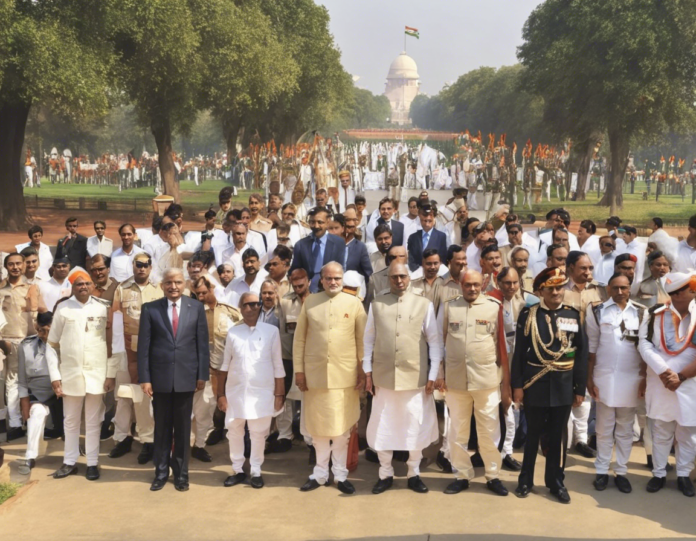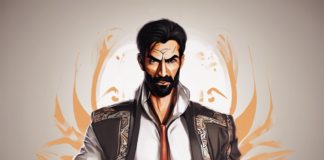India, known for its vibrant culture, rich history, and diverse population, is the largest democracy in the world. At the helm of this great nation is the President of India, who serves as the ceremonial head of state and the commander-in-chief of the Indian Armed Forces. As of [current year], the esteemed office of the President is held by [President’s Name], widely regarded for their distinguished service and leadership.
Role and Responsibilities of the President of India
The President of India is a prestigious position with several important functions and responsibilities. Here are some key roles of the President:
1. Head of State:
- The President represents the nation in international affairs and diplomatic relations.
- He/she receives foreign diplomats and ambassadors.
2. Chief Commander of Armed Forces:
- The President is the supreme commander of the Indian Armed Forces.
3. Keeper of the Constitution:
- The President ensures the preservation, protection, and maintenance of the Constitution of India.
- The President can declare a state of emergency if required.
4. Legislative Functions:
- The President is an integral part of the Indian Parliament and gives assent to bills passed by both houses.
- The President has the power to summon, prorogue, and dissolve the Parliament.
5. Executive Powers:
- The President appoints the Prime Minister and Council of Ministers.
- Administers oaths of office to the Prime Minister, Council of Ministers, Governors, etc.
Brief Background of [President’s Name]
[President’s Name], the current President of India, brings a wealth of experience and a distinguished career to the office. Born on [President’s DOB] in [Birthplace], [President’s Name] has dedicated [his/her] life to public service and the betterment of the nation. [(President’s Name’s background and notable contributions)]
Election Process of the President of India
The President of India is not elected directly by the people but through an Electoral College consisting of:
– Members of Parliament (Lok Sabha and Rajya Sabha)
– Members of State Legislative Assemblies
The election process is conducted as per the Article 54 of the Constitution of India. The candidate who secures more than fifty percent of the total votes is declared the President of India.
Frequently Asked Questions (FAQs)
1. What is the term length of the President of India?
The President serves a term of five years in office. However, there is no limit to the number of terms a President can serve.
2. Can the President of India be impeached?
Yes, the President can be impeached by a two-thirds majority of the total membership of both houses of Parliament. The process is initiated by either house of Parliament and has specific grounds such as violation of the Constitution.
3. Does the President of India have any real power?
While the President’s role is largely ceremonial, certain powers such as appointing the Prime Minister, dissolving the Parliament, and declaring emergency, provide [President’s Name] with significant influence.
4. Who was the first President of India?
Dr. Rajendra Prasad was the first President of India, serving from 1950 to 1962.
5. Can a non-Indian citizen become the President of India?
No, only a citizen of India who is at least 35 years old is eligible to become the President of India.
6. What qualifications are required to become the President of India?
To be eligible for the office of the President of India, a candidate must:
– Be a citizen of India
– Be at least 35 years of age
– Be eligible for election as a member of the Lok Sabha
7. How is the Vice President of India different from the President of India?
The Vice President of India is the second-highest constitutional office in the country. While the Vice President acts as the ex-officio Chairman of the Rajya Sabha, the President of India serves as the head of the state and the supreme commander of the armed forces.
8. Can the President of India reject a bill?
The President of India can send a bill back to the Parliament for reconsideration, which is known as a suspensive veto. However, if the bill is presented to the President again and passed by the Parliament, he/she is bound to give assent.
9. What privileges does the President of India enjoy after retirement?
After retirement, the President is entitled to a pension, allowances, and other benefits as per the President’s Emoluments and Allowances Act of 1951.
10. Is the President of India directly elected by the citizens?
No, the President of India is not directly elected by the citizens. The President is elected by an Electoral College consisting of elected members of both houses of Parliament and state legislatures.
In conclusion, the President of India holds a crucial position in the governance and functioning of the country. [President’s Name], with [his/her] exemplary leadership and dedication to serving the nation, continues to uphold the values and principles of the Indian Constitution, making significant contributions to the country’s progress and development.






